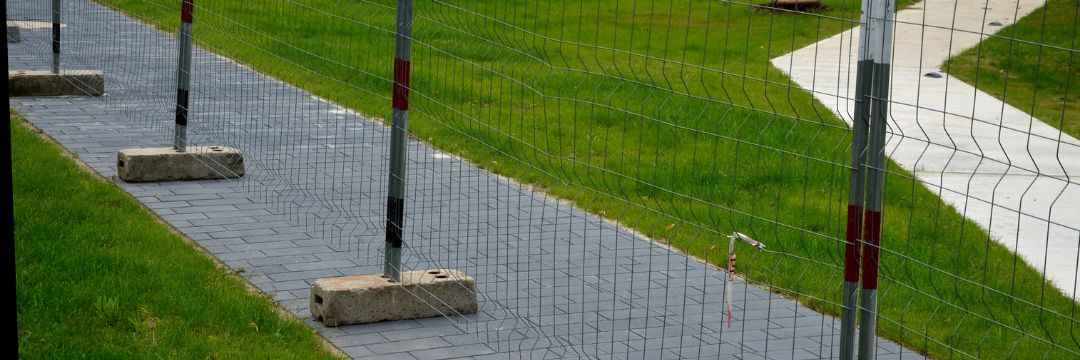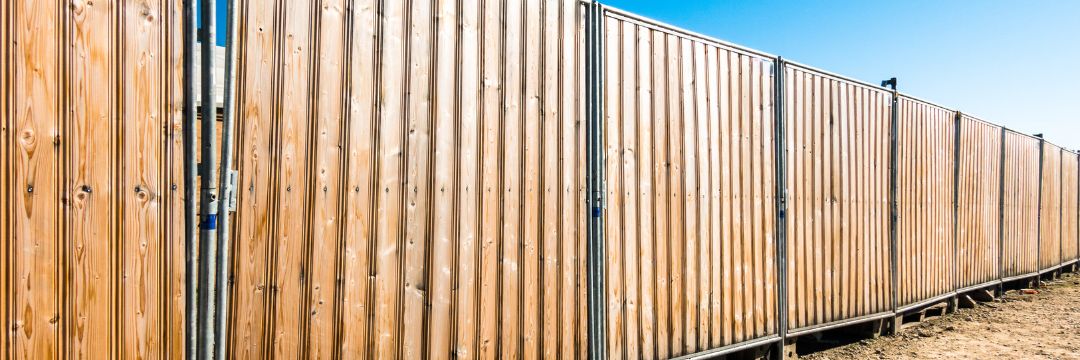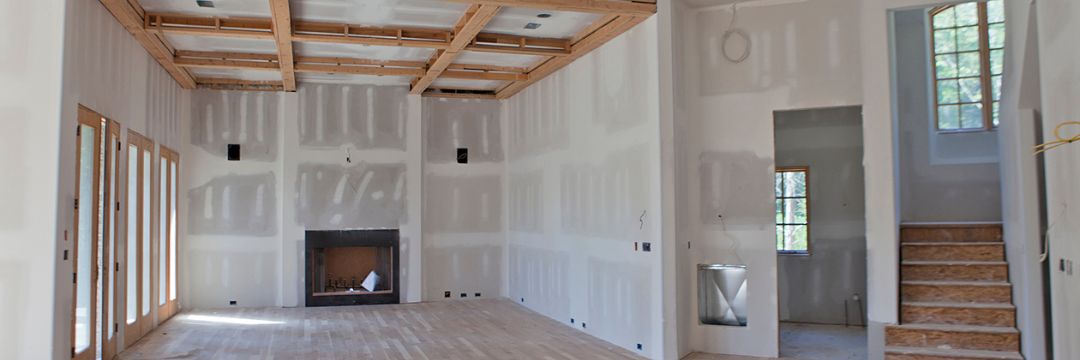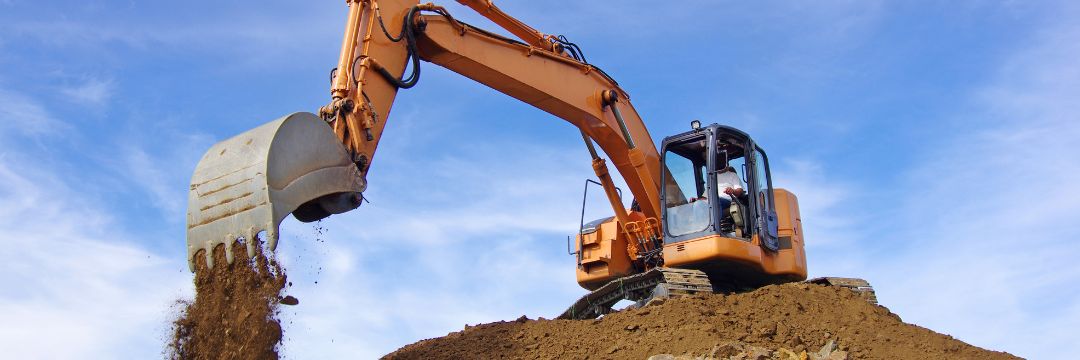Temporary Fencing – The Complete Guide
Temporary Fencing – The Complete Guide
Temporary fencing on a home cleaning and maintenance blog? You might ask yourself why we're writing about temporary fencing, hoardings & barrier systems on this blog.
Well, temporary fencing systems and barrier systems are something we see every day. They are used to secure work sites, crowd control, direct traffic, temporary storage, and many other uses. But, of course, the primary usage is to protect the general public. Still, if you do major maintenance on your home or garden, you might legally need to use temporary solutions to keep people safe or out of your home or garden. There is a range of Australian Standards regarding temporary fencing systems.
What Counts as Temporary Fencing?
This is an easy question to answer. Firstly, temporary fencing systems must be free-standing and self-supporting. Ok, but what does that mean?
Free-standing: It can't be buried or concreted into the ground.
Self-supporting: It can't be attached to anything else.
This last definition can sometimes be bent if needed; it can be strapped to a pole or connected to a wall if it makes mounting easier or is needed to stop passage.
What Are the Differences Between Temporary Fencing Systems?
Let's look at the two main categories of temporary fencing solutions available:

Temporary Fencing – Open Fencing
The most common type of temporary fencing. This is the typical interlocking fence panel with chainlink fencing or wire mesh to fill the panel, with the base being made up of a counterweight support system.
Sometimes, they can be covered with a construction wrap or mesh tarpaulin. Which can be used for publicity or to help keep dust from leaving the building site.
These fencing systems are generally modular, making it easy to mount, dismount and move to another location.

Temporary Fencing – Solid Fencing
This type of temporary fencing is often called 'hoarding'. Unlike open fencing, these are solid self-supporting panels, so they don't use chainlink or wire mesh to close the panel, as they are filled using something like corrugated steel sheets. Sometimes you'll see them connected to an overhead protective structure or scaffolding.
We won't go into much detail about this type of temporary fencing as it's more often used for more significant construction sites or developments, mainly in town centres or where there is a lot of pedestrian traffic. But the basic ideas will be the same as other types of temporary fencing.
When Is Temporary Fencing Used?
As the name suggests, when fencing is only needed for a specific period or temporarily. The list of uses for temporary fencing is endless.

Construction Sites
The #1 reason why temporary fencing systems are used. Used to stop unauthorised people from entering the work site. And thus preventing safety issues, theft, vandalism and, in some cases, privacy. Privacy? Well, imagine that you're replanting a hedge, and while working on your garden, you don't want people looking into your home and garden; that's privacy!
Another example is if you're using a tree removal service, you might need to use temporary fencing.

Swimming Pools
Summers here (if not, please imagine it is), it is hot, the kids are annoying, and you decide to use an above-ground pool (that will be deeper than 30 cms) to make everyone happy. The case could happen to any Aussie family. Well, if you don't have a safety barrier that can stop small children from accessing the pool, you could end up with a big fine!
Any pool or spa with a depth of more than 30 cm will need a safety barrier. If you're looking for more information on this, check out the Fair Trading website.

Temporary Storage
Maybe you're doing a big gardening project and need machinery and earthmoving equipment. If you can't store it in your garden, you'll need somewhere to keep it safe. You can create a safe storage area with the correct temporary fencing system. We'll go into more details about secure temporary fencing systems later.
How Temporary Fencing Must Be Placed
Check your local bylaws, but generally speaking, these are common things to have in mind:
There must be no hazard or nuisance to pedestrians or traffic.
It must not block the line of sight of pedestrians, motorists, traffic signs, traffic lights, or traffic entering or leaving the building site.
Fencing must be maintained in good condition, free of protrusions, so as not to snag clothing or cause physical harm.
You will need special permission if it infringes on council property, including paths and roads.
If a construction wrap or mesh tarpaulin is used, you must reinforce the fence so as not to be affected by winds.
Barbed wire cannot be used.

Secure Temporary Fencing
Earlier, we talked about the correct temporary fencing system. While many temporary fencing systems are on the market, not all are secure. Why? Just take a look at 90% of building sites; you'll see that most fencing systems are rickety, with loose fencing panels. Just look at the image above; does that look secure to you?
The reason is that the design hasn't changed much since the first standardised temporary fencing systems appeared on the market in 1966.
Almost all temporary fencing systems comprise of simple fencing panels, concrete or rigid plastic foot and a simple nut and bolt bracket. This type of system can be easily opened, and as the bracket is often seen as optional, it might not even have been bolted into place.
But it's the exception that proves the rule. Till now, I've found at least one secure temporary fencing system on the market. This new system has been designed to be mounted with the minimum amount of pieces.
It's made up of 3 integral pieces:
The keyhole foot piece, if needed, can be interlocked with other blocks to add stability to the fence.
The interlocking panels, which lock onto the next panel and the foot. No need for brackets to stop people from opening the fence.
The gate panel with lock. Thanks to this design, unlike other systems, you can define the entrances to the site.
Conclusion
Now you know a bit more about temporary fencing, you should be able to make an informed decision about the best fencing system for your needs. Remember that temporary fencing is something needed by law on many occasions. But in any case, using a secure temporary fencing system is always a good idea to keep people safe, your belongings or your privacy respected.
Do you have any questions about temporary fencing? Then use the contact form below to let us know, one of our experts will reply, and if we think more people could benefit from the information, we'll add it to the article.
The Australian Cleaning & Maintenance Blog Contact Us
Here you'll find tips and tricks to a better, cleaner and safer home. From cleaning hacks, tips, strategies and routines, this is your go-to for all things cleaning! Even though the domain contains the word gutter cleaning, the site is for all types of maintenance. If you want to submit an article, ask a question or express your undying love for us, please use the contact form below.
Address
Australia